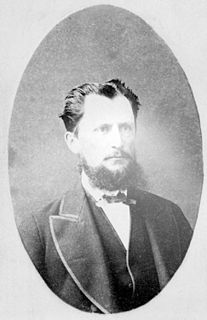Formerly a British colony, British Columbia became a province of Canada on July 20, 1871. An interim Cabinet was appointed by the Lieutenant Governor of British Columbia, and election writs for the first general election as a province of Canada were issued to choose 25 members of the first provincial legislature from 12 ridings (electoral districts). These ridings were:

British colonization of the Americas began in 1607 in Jamestown, Virginia, and reached its peak when colonies had been established throughout the Americas. The English, and later the British, were among the most important colonizers of the Americas, and their American empire came to surpass the Spanish American colonies in military and economic might.

British Columbia is the westernmost province of Canada, located between the Pacific Ocean and the Rocky Mountains. With an estimated population of 5.016 million as of 2018, it is Canada's third-most populous province.

The provinces and territories of Canada are the sub-national governments within the geographical areas of Canada under the authority of the Canadian Constitution. In the 1867 Canadian Confederation, three provinces of British North America—New Brunswick, Nova Scotia, and the Province of Canada —were united to form a federated colony, becoming a sovereign nation in the next century. Over its history, Canada's international borders have changed several times, and the country has grown from the original four provinces to the current ten provinces and three territories. Together, the provinces and territories make up the world's second-largest country by area.
Contents
- Polling conditions
- Statistics
- Results by riding
- Byelections
- Composition of House at dissolution
- Further reading & references
- Cariboo (three members)
- Comox
- Cowichan (two members)
- Esquimalt (two members)
- Kootenay (two members)
- Lillooet (two members)
- Nanaimo
- New Westminster (two members)
- New Westminster City
- Victoria (two members)
- Victoria City (four members)
- Yale (three members)
Cariboo was one of the twelve original electoral districts created when British Columbia became a Canadian province in 1871. Roughly corresponding to the old colonial electoral administrative district of the same name, it was a three-member riding until the 1894 election, when it was reduced through reapportionment and became a two-member riding until the 1916 election, after which it has been a single-member riding. It produced many notable Members of the Legislative Assembly (MLAs), including George Anthony Boomer Walkem, third and fifth holder of the office of Premier of British Columbia and who was one of the first representatives elected from the riding; John Robson, ninth Premier of British Columbia; and Robert Bonner, a powerful minister in the W.A.C. Bennett cabinet, and later CEO of MacMillan Bloedel and BC Hydro.
Comox was a provincial electoral district in the Canadian province of British Columbia. It was one of the first twelve ridings representing that province upon its joining Confederation, and was a one-member constituency. The core of this once-vast riding, which at its inception stretched to the Yukon border, is now named Comox Valley.
Cowichan was one of the first twelve electoral districts created when British Columbia became a Canadian province in 1871. It was located on southern Vancouver Island. It was a one-member riding only. Its last appearance on the husting was in 1920. It was then superseded by Cowichan-Newcastle, which appeared in provincial elections from 1924 to 1963, after which a revised riding is named Cowichan-Malahat, which is extant today.


